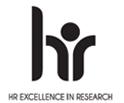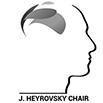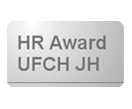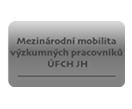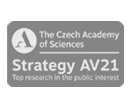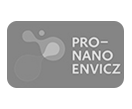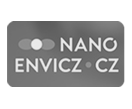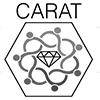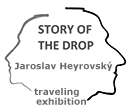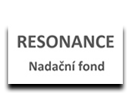Obituary for Rudolf Zahradník (1928–2020): “To Do What’s Right”
Rudolf Zahradník, a pioneer of quantum chemistry and the founding president of the Academy of Sciences (1993) and the Learned Society (1994) of the Czech Republic, died on October 31 in Prague. Among his distinctions were memberships in the International Academy of Quantum Molecular Science as well as Academia Europaea.
In his autobiography (2008), Rudolf provided brief characterizations of a host of colleagues from the national and international community he respected and was fond of. Among their traits that he valued the most were determination, decency, kindness, noblesse—and a dose of connoisseurship, enhanced by the ability to tell stories. A harmonious combination of these very virtues is what aptly characterizes the personality of Rudolf himself. No wonder, then, that many of the like-minded in his surroundings looked up to him for leadership. By the time of the Velvet Revolution, in 1989, Rudolf was ready for high office both in academia and in government: while the former materialized abundantly, the latter—the state presidency—did not, to thedetriment of his country.
Rudolf’s scientific career started in the kitchen of his parents’ apartment in Prague—with an explosion (potassium chlorate with sulfur). He was about thirteen then. Instead of banning their only son’s further such activities, Rudolf’s parents merely banished them to a more suitable room within their apartment. As he would later reveal, the search for a “universal catalyst” was among Rudolf’s preoccupations, apart from his adventures as a dedicated Boy Scout. After the war—and the end of the Nazi occupation—he studied chemistry at a vocational high school and, in 1948–1952, at Prague’s Institute of Chemical Technology. Among his notable teachers at the Institute were Otto Wichterle (inorganic chemistry) and Jaroslav Koutecký (classical theoretical physics). In the final semester, Rudolf started, on his own, reading up on quantum mechanics—in Rate Processes by S. Glasston, K. Laidler, and H. Eyring. Thus, on the subject to which he would dedicate much of his career, he was, in his own words, an autodidact. However, the Institute offered a course in higher mathematics (calculus and linear algebra), a rarity in the chemistry curricula at the time, which Rudolf took full advantage of. However, it was also at his alma mater that he heard for the first time the snub that “quantum mechanics may be good for the study of the hydrogen atom—but that’s not chemistry.”
It was at the Institute for Occupational Medicine led by the polymath Jaroslav Teisinger that Rudolf made his first contributions to quantum chemistry. By using Hückel’s theory of molecular orbitals (HMO), he found new organizing principles concerning the toxicity of aliphatic compounds and the stability of sulfur heterocycles. A successful search for correlations between the electronic spectra of conjugated systems and their HOMO–LUMO energy gaps obtained via HMO was among Rudolf’s other pioneering feats. Apart from paper and pencil, the technology he used was a borrowed Olivetti calculator. Charles Coulson’s plea to theorists “give us insight, not numbers!” might have as well come from Rudolf.
In 1961, Zahradník became the head of the “Applied Quantum Chemistry” group at Rudolf Brdička’s Institute of Physical Chemistry of the Czechoslovak Academy of Sciences. As he would put it later, his goal was not only to find connections between structure and properties, such as reactivity and spectra, of known compounds but to predict such connections for compounds that were yet to be synthesized. Joining forces with Jaroslav Koutecký, then also at Brdička’s Institute, Rudolf Zahradník laid the foundations of what is known as the “Prague School of Quantum Chemistry.” Despite emigration of Koutecký and his key associates, Joe Paldus and Jiří Čížek, in the aftermath of the Soviet-led invasion of Czechoslovakia in 1968, the “Prague School” continued to prosper throughout the politically and materiály adverse 1970s and 1980s. In 1972, Brdička’s Institute was incorporated into The Jaroslav Heyrovský Institute of Physical Chemistry and Electrochemistry. In the wake of the Velvet Revolution, Rudolf would be elected director of the Heyrovský Institute in 1990. The list of problems tackled by Rudolf and his circle included: electronic structure and spektra of alternant and non-alternant hydrocarbons; structure properties of open-shell systems; weak molecule–molecule interactions; catalysis; interactions of biomolecules; ion–molecule reactions.
Rudolf’s circle was comprised of about sixty students and collaborators; five of the students he characterized as his “doctoral sons:” Josef Michl, Petr Čársky, Pavel Hobza, Zdeněk Havlas, and Pavel Jungwirth.
Rudolf authored or co-authored about 350 papers and 15 books. Interestingly, and perhaps characteristically, Rudolf would designate as his greatest adventures in the Vale of Tears—his standard reference to our earthly existence—the fall of Nazism and then of Communism. He would often compare the way these two regimes treated culture in general and academia in particular. Neither proved capable of extinguishing Rudolf’s enthusiasm for science nor of precluding him from doing what’s right. Rudolf Zahradník “a worldleading scientist and a true aristocrat of the spirit” (Joshua Jortner)—was over decades a reliable mentor and selfless friend to countless students and colleagues; in dark times he provided support and gave hope in seemingly hopeless situations. Zahradník’s motto was: Look ahead, and trust and connect people.
Rudolf’s attitudes were forged within his symbiotic marriage with Milena Zahradníková, née Bílková, whom he met in an underground shelter during the Prague uprising in May 1945. Milena died six days before Rudolf. They are sorely missed.
Publisher’s Note Springer Nature remains neutral with regard to jurisdictional claims in published maps and institutional affiliations
Bretislav Friedrich, bretislav.friedrich fhi-berlin.mpg.de Institut Für Chemie, Sekr. C 4, Technische UniversitätBerlin, Straße des 17. Juni 115, 10623 Berlin, Germany
fhi-berlin.mpg.de Institut Für Chemie, Sekr. C 4, Technische UniversitätBerlin, Straße des 17. Juni 115, 10623 Berlin, Germany
Helmut Schwarz, Fritz-Haber-Institut der Max-Planck-Gesellschaft, Faradayweg 4‑6, 14195 Berlin, Germany
Photo: Rudolf Zahradník and Milena Zahradník (2016)
© The Author(s), under exclusive licence to Springer-Verlag GmbH, DE part of Springer Nature 2021



